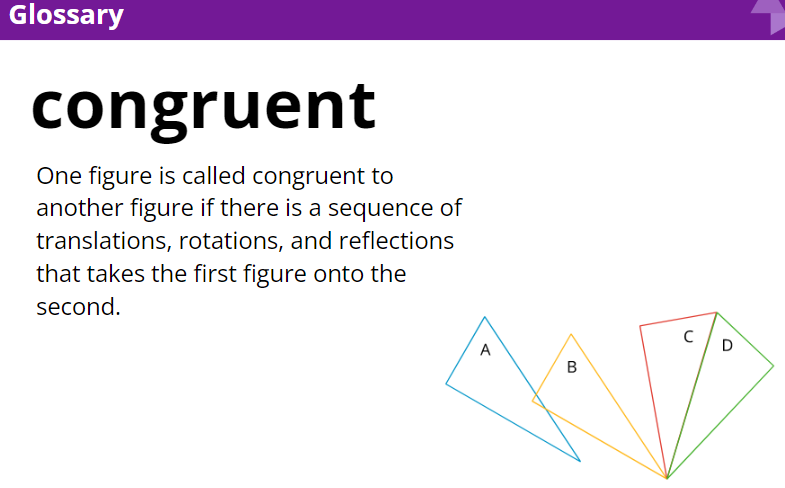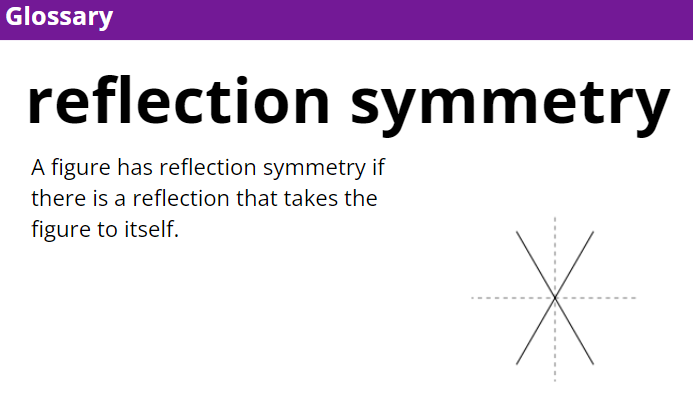L1.15 - Symmetry
Learning Intentions and Success Criteria
We are learning to:
- Describe (orally and in writing) the reflections that take a figure onto itself.
- Describe the reflections that take a figure onto itself.
15.1: Back to the Start

Here is a segment AB.
If you translate the segment up 5 units then down 5 units, it looks the same as it did originally.
1. What other rigid transformations create an image that fits exactly over the original segment?
2. Are there any single rigid motions that do the same thing?
15.2: Self Reflection
Determine all the lines of symmetry for each shape in the applet and complete the following:
- the name of the shape
- the definition of the shape
- drawings of each line of symmetry
- a description in words of each line of symmetry
- one non-example in a different color (a description and drawing of a reflection not over a line of symmetry)
Figure 1
Figure 2
Figure 3
Figure 4
Figure 5
Figure 6
Figure 7
Figure 8
15.3: Diabolic Diagonals
Kiran thinks both diagonals of a kite are lines of symmetry. Tyler thinks only 1 diagonal is a line of symmetry. Who is correct? Explain how you know (Look at the above applet for an example of a kite).

Sketch shapes in the applet and use ABC Text tool to write a transformation statement for each one.

Learning Intentions and Success Criteria
We are learning to:
- Describe (orally and in writing) the reflections that take a figure onto itself.
- Describe the reflections that take a figure onto itself.
Cool-Down: Criss Cross
Use the applet below to answer the two questions. 1. What happens to the diagonal of a rectangle when the rectangle is reflected across a line of symmetry? 2. What does this suggest about the diagonals of rectangles?
Sketch a rectangle with a diagonal in the applet and reflect the rectangle across a line of symmetry.











